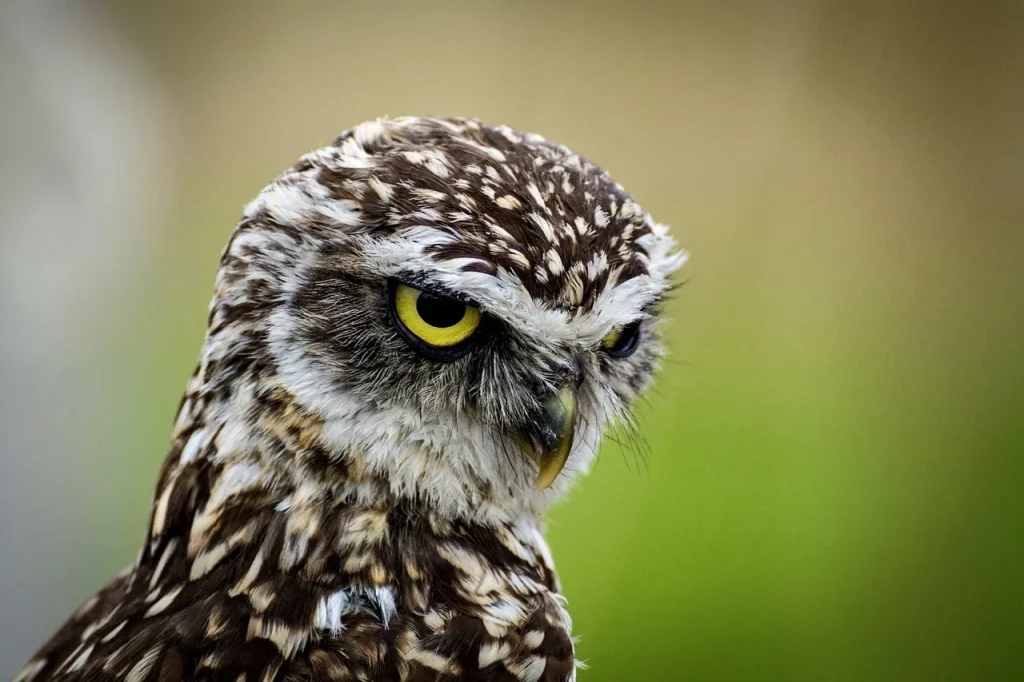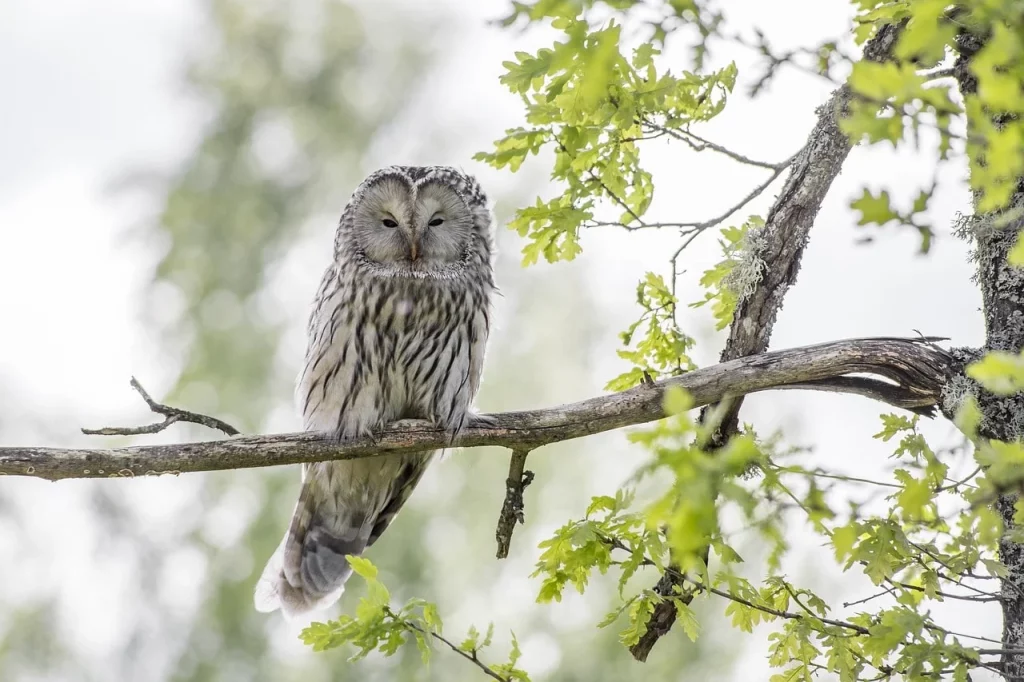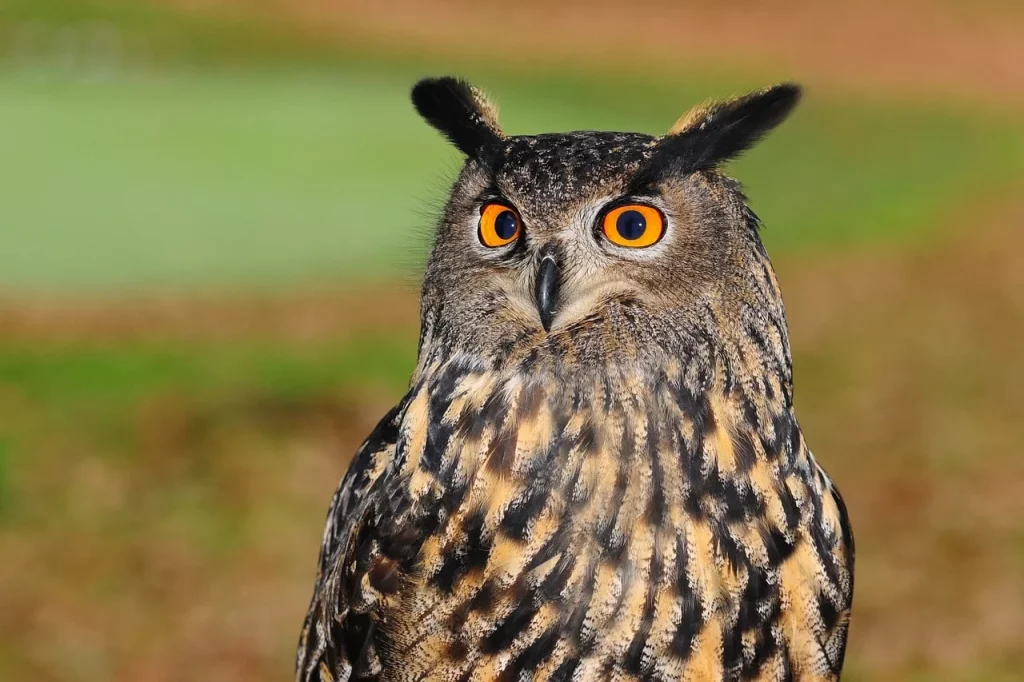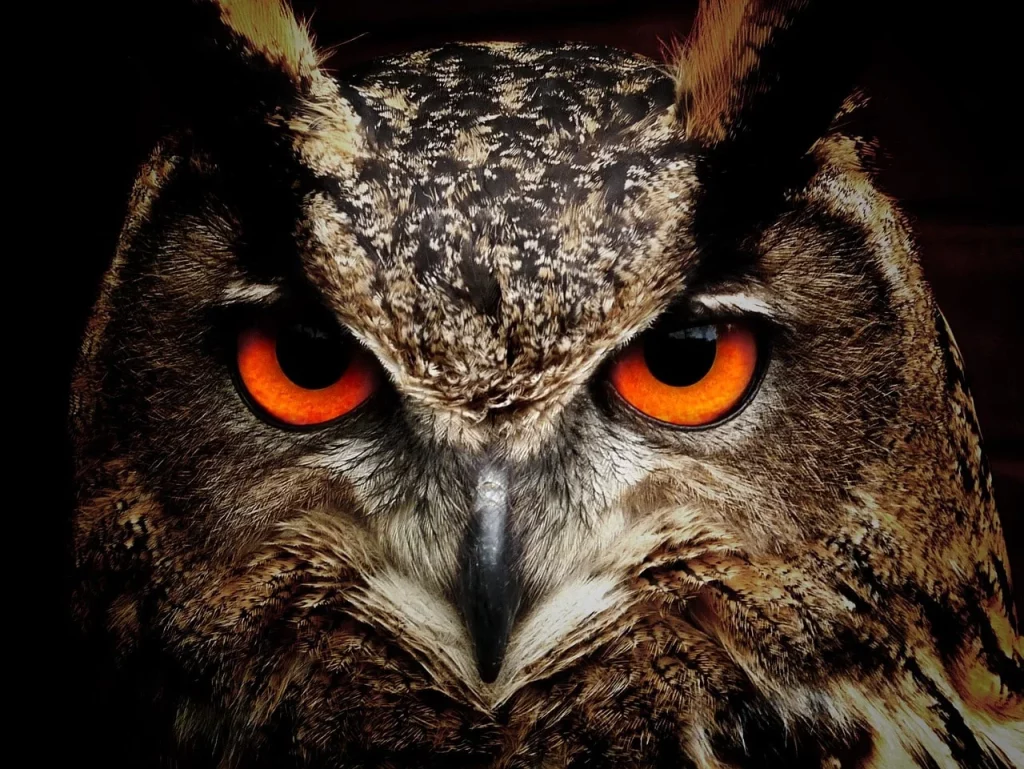Imagine a world where the night comes alive with the sound of hooting and the rustle of feathers. That’s the world of owls, mysterious and intriguing. In this article, I’ll bring you closer to these incredible birds.
From their unique anatomy, which enables silent flight, to their varied and sometimes quirky behaviors, owls are creatures that never cease to amaze. Get ready to explore some really interesting information, where every fact is a window into the extraordinary lives of these nocturnal wonders.
The owl is the wisest of all birds because the more it sees, the less it talks.
African Proverb
Owl Facts
As you embark on this epic journey through the intriguing world of owls, remember: a quiz awaits at the end. Only the most attentive readers got a maximum score of 10/10.
- Owls belong to the order Strigiformes, comprising over 200 species.
- They can rotate their heads up to 270 degrees.
- Owls have asymmetrical ears located at different heights on their heads.
- They have tubular eyes that provide binocular vision but cannot move in their sockets.
- Most owl species are nocturnal, active at night.
- Their feathers are specially adapted for silent flight.
- Owls’ diet mainly consists of small mammals, insects, and other birds.
- The smallest owl is the Elf Owl, which is about the size of a sparrow.
- Owls have zonal plumage that helps them blend into their environment.
- Their call varies greatly among species, and they use it to establish territories and attract mates.
- Owls’ age can be determined by analyzing their plumage.
- Some species exhibit sexual dimorphism, where males and females have different appearances.
- Barn Owls can hunt in complete darkness using their keen hearing.

- Owls migrate depending on food availability and climate conditions.
- Pellets, regurgitated undigested parts of their food, provide clues to their diet.
- Their eyes are fixed in their sockets, providing a wider field of vision.
- Owls have three eyelids: one for blinking, one for sleeping, and one for keeping the eye clean and healthy.
- A group of owls is called a parliament.
- Their claws and talons are extremely powerful, used for capturing prey.
- Owls have soft fringes on the edges of their feathers to muffle sound.
- The Great Horned Owl has the most diverse diet of all North American raptors.
- Owls do not build their own nests but often use nests created by other species.
- Their neck bones have adaptations that allow head rotation without cutting off blood flow to the brain.
- Some owl species are daytime hunters, like the Northern Hawk Owl.
- Snowy Owls can be found in the Arctic tundra and are well adapted to cold environments.
- Camouflage is a key survival tactic for owls, helping them blend into their surroundings.
- The largest owl by length is the Great Grey Owl.
- Owls play a significant role in controlling rodent populations.

- Their feet are covered in feathers for insulation against cold weather.
- Owls have a binocular field of vision of about 110 degrees, with 70 degrees being in sharp focus.
- Eurasian Eagle-Owls are among the world’s largest and most powerful owls.
- Many cultures associate owls with wisdom and knowledge.
- Owls have excellent depth perception.
- The color of an owl’s feathers is influenced by their habitat and species.
- Some owl species mate for life.
- Fledging, when young owls leave the nest, occurs at different ages depending on the species.
- Owls communicate through a variety of calls, hoots, and body language.
- Their hearing is among the best of any animal tested.

- Facial discs around their eyes help to funnel sound to their ears.
- Owls’ hunting strategies vary greatly among species.
- The lifespan of an owl varies, with larger species generally living longer than smaller ones.
- Some species of owls exhibit playful behavior, especially as juveniles.
- Urbanization and habitat loss pose significant threats to owl populations.
- Owls do not have a sense of smell, which is unusual for birds.
- Their digestive system is unique, separating edible and inedible parts of their prey.
- Owls’ ability to turn their heads rapidly helps in hunting and environmental awareness.
- Each owl species has unique patterning and coloration for camouflage and species identification.
- The feather structure of an owl’s wings allows silent flight, aiding in stealth hunting.
- Conservation efforts focus on protecting owl habitats and preventing species decline.
- Owls have varied reproductive strategies, with some species laying one egg per year and others several.
Owl Myths

Having journeyed into all these cool facts about owls, it’s now time to unravel the tapestry of myths surrounding these mysterious birds. Let’s see the actual truth behind the most common ones.
- Owls Can Rotate Their Heads 360 Degrees
Owls have remarkable neck flexibility, allowing them to turn their heads up to 270 degrees in either direction. This compensates for their fixed eyes, but they definitely can’t do a full 360 spin. It’s more like a really impressive, almost three-quarters turn. - Owls Are Wise
This myth likely stems from their thoughtful, penetrating gaze. In reality, owls aren’t especially wise compared to other birds. Their intelligence is adapted for hunting, with keen senses and stealth, but they’re not the feathered Einsteins of the avian world. - Owls Can See in Complete Darkness
Owls have excellent night vision, but they can’t see in absolute darkness. They need some light, like moonlight or starlight, to see. Their eyes are adept at maximizing the available light, making them top-notch nocturnal hunters. - All Owls Hoot
Not all owls hoot! Their vocalizations vary widely, with some species whistling, screeching, or even making raspy sounds. Each species has its own unique call, which can be as distinct as their feather patterns. - Owls Are Bad Omens
This superstition varies across cultures. In some cultures, owls are indeed seen as harbingers of doom, but in others, they’re revered as symbols of wisdom or protectors. In reality, owls are just birds doing their birdy things, completely unaware of human superstitions.
Owl Quotes

Owls, the mysterious guardians of the night, have captivated human imagination for centuries. Let’s delve into some of my favorite quotes that reflect their enigmatic allure.
Do not trap yourself into an owl’s hooting sound where sad nights linger through the blackness of a hound.
Munia Khan
Munia Khan uses the owl’s hoot as a metaphor for becoming engulfed in melancholy and darkness.
Owls are known as lonely birds; but it is not known that they have the forest as their best friend!
Mehmet Murat
This quote by Mehmet Murat, reflects on the solitary nature of owls and their deep connection with the forest environment.
An owl is the wisest of all birds because the more it sees, the less it talks.
Christie Watson
Similar to the African Proverb, this quote by Christie Watson emphasizes the wisdom in observation and silence, qualities often associated with owls.
The owl of ignorance lays the egg of pride.
Proverb
This proverb warns that ignorance can lead to pride, symbolized by the owl, a creature often associated with knowledge and mystery.
You think that you do not know me, but in the quiet of the night, when all is still, I can hear your heart as it beats, says the owl.
J.R. Rim
J.R. Rim personifies the owl, giving it a mystical quality of being able to understand and connect with humans on a deep level.
Owl FAQ

As we are heading to the final section of this article (the quiz), we make a stop to check out some common questions that I found online about owls. Read carefully, because this is the last piece of information that you will get. Don’t disappoint me.
- Where do most owls live?
They can be found almost everywhere around the world, from the frigid Arctic tundras to the steamy rainforests. These feathery fellows adapt to various habitats, including forests, deserts, and even urban areas. - How do owls sleep?
Owls, like most birds, catch their Zs while perching. They have a clever adaptation in their feet that allows them to grip tightly without using much energy. This means they can snooze without the fear of falling off their perch. And here’s a fun fact: owls can sleep with one eye open when they feel the need to be on alert! - Are owls omnivores?
Not quite! Owls are more like the daredevils of the dining world – they’re carnivores. These birds of prey have a diet mainly consisting of small mammals, insects, and other birds. Some larger owl species might even snack on fish or small reptiles. - Can owls be pets?
Owls may look adorable and wise, but they’re not your typical pet material. These birds are wild animals with specific needs that are difficult to meet in a home setting. They require a special diet, plenty of space, and they can be quite noisy. Plus, in many places, it’s illegal to keep an owl as a pet without a special permit. It’s best to admire these majestic creatures from a respectful distance. - Will owls attack cats?
While it’s not common, they can pose a threat to small pets, including cats, especially in areas where natural prey is scarce. Larger owl species might see small pets as potential food. It’s always a good idea to keep an eye on your furry friends when they’re outdoors, especially at night when owls are most active.
Owl Quiz

Are you ready for the ‘owl-mazing‘ quiz? But remember, if you don’t get a single question right, a parliament of owls will gather to hoot in disappointment and assign you some feathery homework!
Owl Merch
If you are a true owl fan, then you definitely need to check out our knightowl merchandise. You can find T-shirts, hoodies, mugs, and tote bags for your favorite designs. Feel free to check out all the other designs in our shop.
Conclusion
As we close this fascinating journey into the world of owls, it’s hard not to be amazed by these mysterious creatures of the night. From their incredible head rotation to their silent flight, owls have intrigued and inspired us for centuries.
Their unique adaptations not only make them skilled hunters but also vital players in our ecosystems. As you reflect on these incredible birds, consider how they have adapted to their environment and the role they play in the natural world.
But let’s close this with a question: If owls organized their own Olympic Games, which event do you think they’d be most skilled at? Silent swooping, marathon mouse catching, or synchronized hooting? Let me know in the comments.
6 Sources Used For This ArticleOwl Quotes About the Wide-Eyed Night Predator – Everyday Power
Owl Quotes That Will Show You How Wise They Are – Quote Ambition
Fascinating Owl Facts You Didn’t Know – World Birds
Fascinating Owl Facts – Pet Prints
Owl – Vedantu



1 Comment
location voiture aeroport sharjah